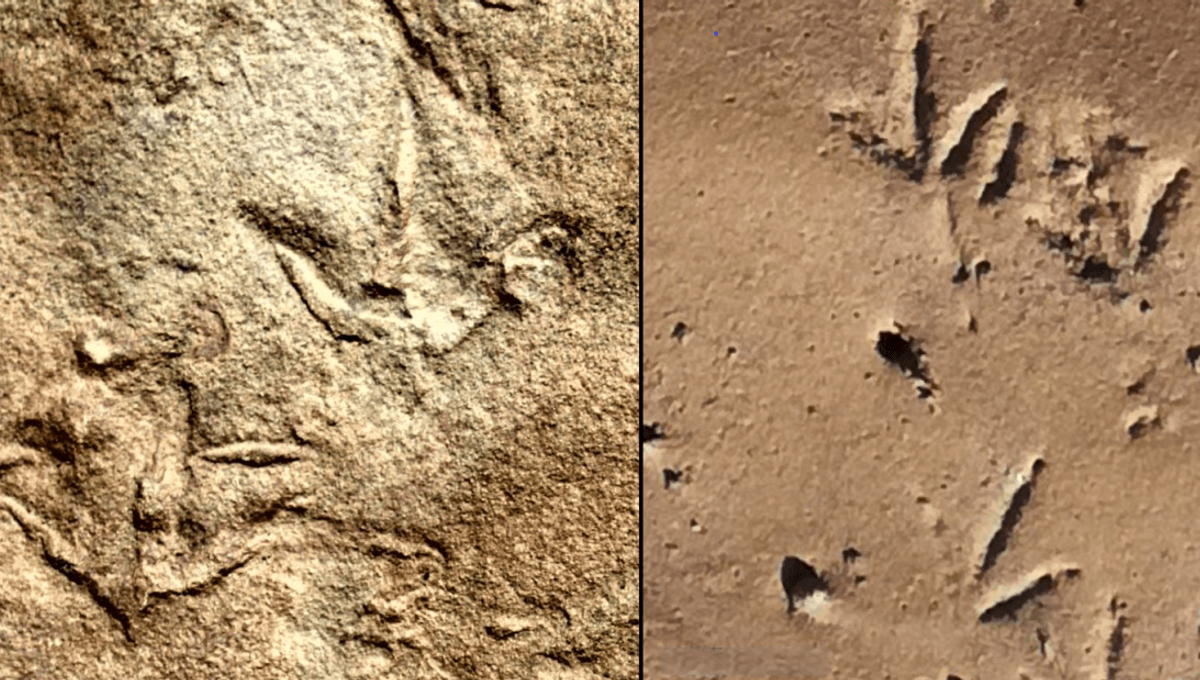
An ancient ornithological mystery is the subject of a new paper that looked at fossil tracks made by unknown ancient animals dating back as far as the Late Triassic. They are distinctly bird-like, which doesn’t sound too strange – until you take into account that, at 210 million years old, some of them predate the oldest known true bird bones by a cool 60 million years.
If the tracks weren’t made by birds, who was strutting around on these bird-like feet? It feeds into the murky emergence of birds we’re still learning a lot about, as while we know that birds evolved from dinosaurs, exactly when and from which species still isn’t known for certain.
Mystery tracks like these can be used to study an extinct animal’s anatomy and behavior thanks to a nifty area of science called ichnology, which is the study of fossilized tracks, trails, and burrows. Inchnological finds are fascinating, but they can be fleeting, as in the recent case of 120-million-year-old bird tracks – now Australia’s oldest on record – that washed away just a few years after their discovery.
Bird-like fossil tracks have been found at multiple sites across the country of Lesotho in southern Africa, and they’re generally attributed to the ichnogenus Trisauropodiscus, believed to be an ornithischian dinosaur that lived during the Late Triassic or Early Jurassic.
The researchers decided they wanted to dig further into the ichnogenus (the name given to a group of animals known only from fossil tracks, burrows, etc.), and try and assess how many ichnospecies there might be within. To do so, they used fossil tracks they found in the field, as well as others from museum collections and photographs.
Doing so revealed two key morphologies for Trisauropodiscus: one of which is more like non-avian dinosaurs, while the other is more like the footprints of birds. The tracks aren’t a direct match for any fossil animals known from this area at this time in Earth’s history.
There are a few explanations for the mystery prints. One is that they belonged to dinosaurs, possibly early ancestors of birds. However, another is that they’re an example of convergent evolution if bird-like feet evolved separately among a group of reptiles.
“Trisauropodiscus tracks are known from numerous southern African sites dating back to approximately 215 million years ago,” said the authors in a statement. “The shape of the tracks is consistent with modern and more recent fossil bird tracks, but it is likely a dinosaur with a bird-like foot produced Trisauropodiscus.”
Whatever the case, it pushes back the first emergence of bird-like feet to the Late Triassic Period, providing a little more insight – and an extra dash of mystery – into the evolution of the first true birds.
The study is published in the journal PLOS ONE.
Source Link: Mystery Bird-Like Footprints Are 60 Million Years Older Than The Earliest Birds